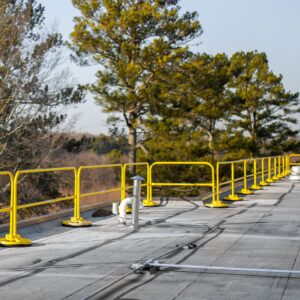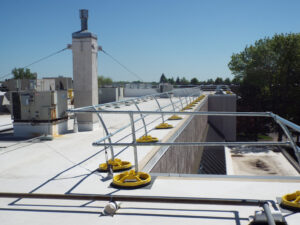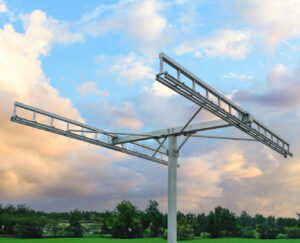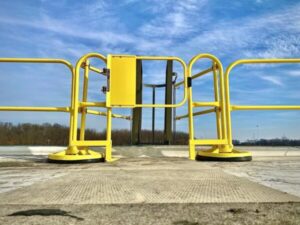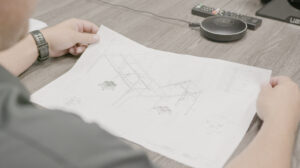Guard Rail: Exploring the Significance, Regulations and Installation Process for a Secure Work Environment
Introduction to Guard Rails
When it comes to establishing safety in the workplace, guard rails are an indispensable tool. Whether it’s a construction site, manufacturing facility, or any occupation involving work at heights, guardrails serve as protective barriers designed to prevent falls and create a secure working environment. In this article, we will delve into the world of guardrail systems, exploring their significance, materials used, regulatory requirements and the installation process. All of this information is aimed at creating a safer work environment for your employees.
What is a Guard Rail?
A guard rail, also known as a safety rail, is a protective barrier or railing system designed to prevent falls and create a secure working environment. A guardrail system generally consists of 4 components: a top rail, mid rail, post and a secure base. Guard railing is commonly used to create a physical barrier between workers and any potential fall hazards. These hazards include edges of elevated platforms, roofs, stairways, or other elevated areas. They are typically made of durable materials and are installed along the exposed sides or edges of a platform or structure.
Guardrails are required by safety regulations and standards in many countries. In the United States, workplace safety regulations are primarily overseen and enforced by the Occupational Safety and Health Administration (OSHA). Regulations help to ensure the protection of workers from falls and to minimize the risk of accidents and injuries. If an employer fails to provide adequate fall protection they could risk citations or fines. We will touch more on safety regulations later in the blog.
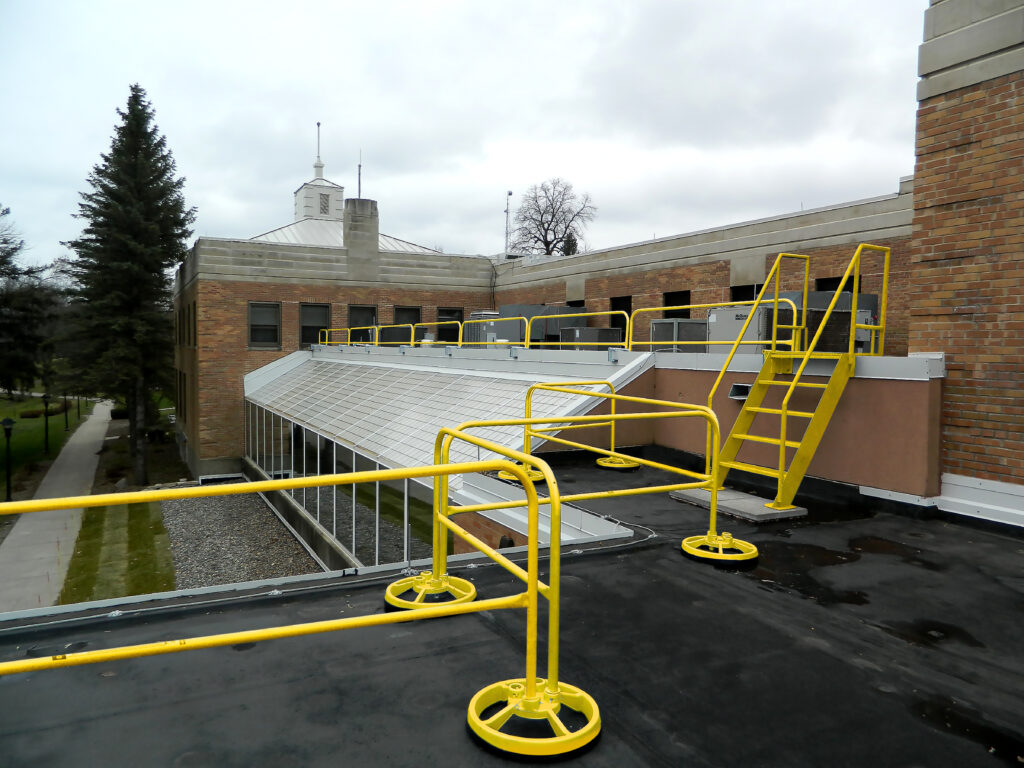
What are Guard Rails Made From?
Guardrails are typically made of durable materials that can withstand different environmental conditions and provide effective protection. The choice of material depends on factors such as the application, budget, weather patterns and specific safety regulations. Here are some common materials used:
Steel: Steel is a popular choice for guardrails due to its strength, durability and resistance to impact. They are frequently used in industrial settings and construction sites due to their ability to withstand heavy loads and harsh weather conditions. Steel guardrails are often galvanized or powder coated to enhance their corrosion resistance and prolong their lifespan.
Aluminum: Aluminum guardrail is lightweight, corrosion-resistant, and easy to install. It is commonly used in both indoor and outdoor settings, such as commercial buildings and rooftops. However, aluminum rails are typically more expensive in material costs and are more prone to bending/denting under significant impact.
Composite Materials: Composite guard rails are made from a combination of materials, such as plastic fibers and wood particles. They offer a balance between durability, aesthetics and low maintenance. Composite guardrails are often used in outdoor settings, such as decks, balconies or waterfront areas. This kind of railing is also used in applications where metal cannot be used as it may disrupt scientific equipment.
It’s important to note that local building codes, industry standards or specific project requirements may also influence the material selection for safety rails. It’s advisable to consult relevant regulations and standards specific to your location and industry to verify compliance with all applicable requirements.
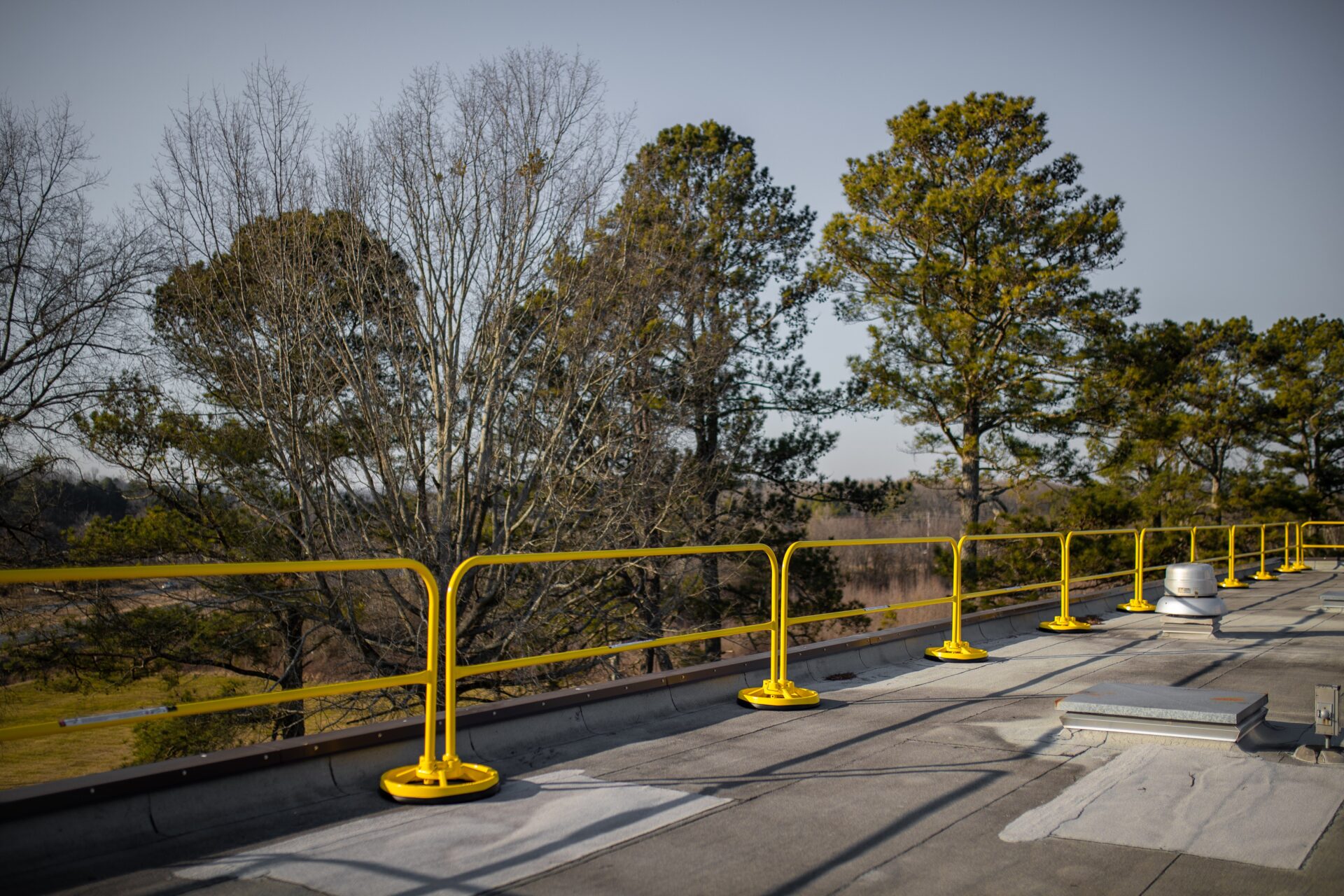
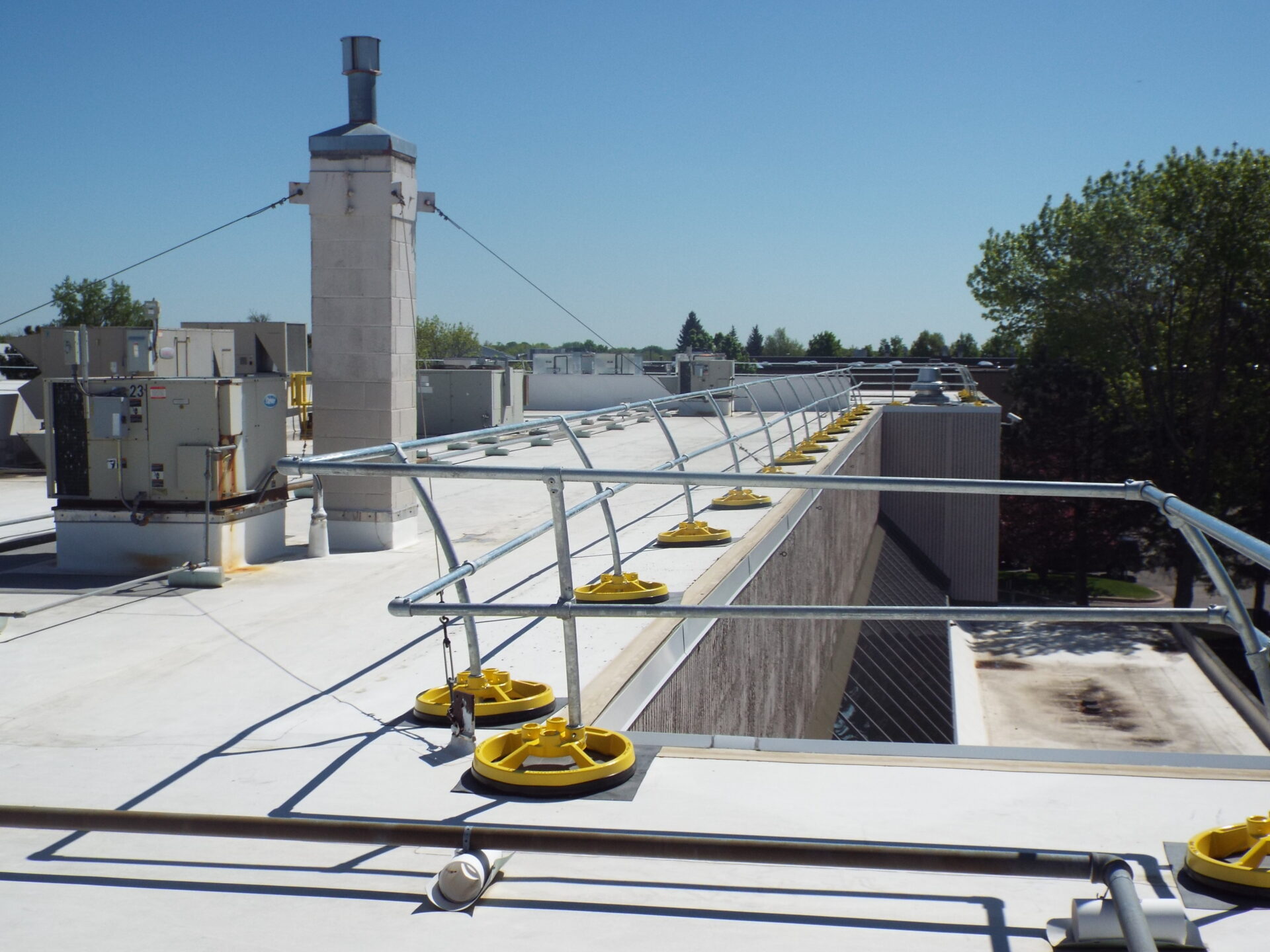
Assess the Work Area:
- Evaluate the work area and identify the locations where guardrails are necessary, such as elevated platforms, roofs, stairs, or other areas with fall hazards.
- Factors such as the location, traffic patterns, environmental conditions and intended purpose of the guard rail are considered during this assessment.
Planning and Design:
- Once the site assessment is complete, the next step is to plan and design the safety system. This involves creating a detailed layout that specifies the dimensions, placement and configuration of the guard rails.
- The design should comply with relevant safety standards, codes, and regulations to secure optimal protection. The planning stage may also include considering additional safety features. This could include reflectors or warning signs, depending on the specific requirements of the site.
Install the Guardrails:
- Mark the locations for the guardrail bases, ensuring they are spaced at appropriate intervals to provide adequate support and stability. Spacing for longer runs is usually 10 feet to maximize safety and reducing cost.
- Once your anchored or weighted bases are positioned, you can then begin to add the safety rail, including top and mid rail sections.
- Depending on application, a toe board may need to be installed at the base of the guard rail system. This will help prevent objects or debris from falling off the edge onto machines or workers below.
Inspect and Test:
- Inspect the entire system to confirm that all components are properly installed, secure and free from defects.
- Conduct tests to verify the stability and strength of the guardrail system, validating it can withstand the required forces and loads.
Provide Access Points:
- Where necessary, install access points such as gates or openings in the guardrail system, equipped with self-closing mechanisms. These should provide safe access to the work area when required.

Train Workers:
- Provide training to workers on the proper use, limitations, and inspection of the guardrail system.
- Emphasize the importance of not tampering with or modifying the safety system without proper authorization.
It’s crucial to remember that these steps provide a general guideline for what an install entails. Specific requirements may vary depending on industry regulations, local codes and the unique characteristics of the work environment. To streamline this process and guarantee optimal results, it is recommended to enlist the help of the professionals who prioritize safety and compliance with industry standards.
Check out the video below for an example of Safety Rail Company’s proven process – from start to finish.
[Video embed removed]
Why Should You Choose a Guard Rail System for Your Roof Safety Plan?
Passive Protection:
Safety rails provide passive protection, meaning they act as a physical barrier between workers and potential fall hazards. Once installed, they offer continuous protection without requiring active engagement or additional equipment, such as harnesses or lanyards. This passive nature enforces constant protection and reduces the risk of human error or failure to use personal fall protection equipment properly.
Enhanced Stability:
Safety rails are securely installed and weighted/anchored, providing stability and resistance against movement or displacement. They are designed to withstand anticipated loads and forces, ensuring reliable protection for workers on the roof. A great option is a weighted mobile safety base. These bases allow for simple installation with no drilling or building roof penetration necessary. The weight of these bases alone allow for added safety. This stability is especially crucial in high-wind or adverse weather conditions, where guardrails offer a more secure safety solution compared to temporary measures like warning lines.
Accessibility and Convenience:
Guardrails create a designated safety zone around the roof edges, making it easily identifiable for workers. The presence of rails eliminates the need for workers to constantly assess their proximity to the edge or adjust their position, allowing them to focus more on the task at hand. This accessibility and convenience contribute to a safer and more productive work environment.
Collective Protection:
Guard railing provides collective protection, meaning it safeguards multiple workers simultaneously. Unlike personal fall protection systems that are individualized, guard rails offer protection for anyone within the guarded area. This aspect is particularly advantageous when multiple workers are present on the roof or when there is frequent movement or interaction near the roof edges.
Visual Deterrent:
Safety rails serve as a visible deterrent, reminding workers of the potential fall hazard and encouraging them to maintain a safe distance from the roof edge. The highly visible presence of the rails help create a culture of security and promotes compliance with safety guidelines.
Compliance with Regulations:
As mentioned earlier, guardrails are often required by safety regulations and standards, such as those set by OSHA, CAL OSHA or International Building Code (IBC). By installing safety rails, employers demonstrate their commitment to meeting legal requirements and assuring the safety and well-being of their workers.
It’s significant to note that while guard rails offer key advantages for roof safety, they should be properly designed, installed and maintained according to applicable regulations and industry standards. Regular inspections and maintenance are essential to confirm the ongoing effectiveness of the guard rail as a safety measure on roofs or any other elevated work areas.
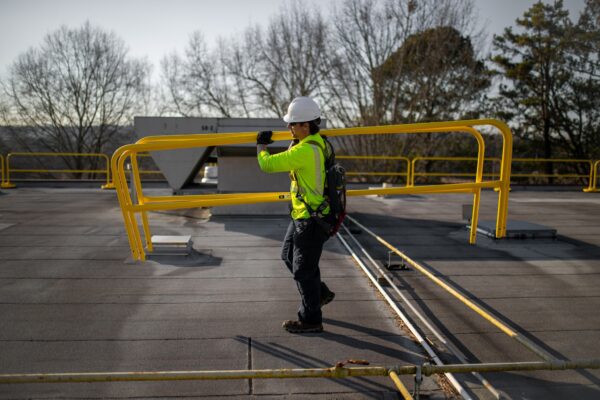
Final Thoughts
Guard rails play a vital role in safeguarding workers against falls and potential accidents when working at heights or around hazards. By understanding the purpose, requirements, materials and benefits associated with guard rails, employers and workers can establish a safer work environment that complies with OSHA regulations. When employers choose guard rails for rooftop safety, they demonstrate their unwavering commitment to providing a secure workplace and protecting the well-being of their valuable workforce, minimizing unnecessary risks and potential harm. If you have any questions or would like to hear more about guard railing, please reach out to our safety experts today!
Thank you for reading and stay safe!

